Visit to Oxford Botanic Garden and Merton College Garden
August 2021
MPG members gathered by the Danby Gate at the entrance to Oxford Botanic Gardens for a welcome by Deputy Director and Head of Science, Dr Chris Thorogood and Head Gardener, Mark Brent. After a quick summary of the history of the garden, founded as a physic garden growing plants for medicinal research in 1621, Chris talked to members about his involvement in current research projects. He had cut a selection of plants, including Nepenthes and used them to demonstrate how botanists are working with mathematicians and engineers to explore possible applications of plant surface features in technology.
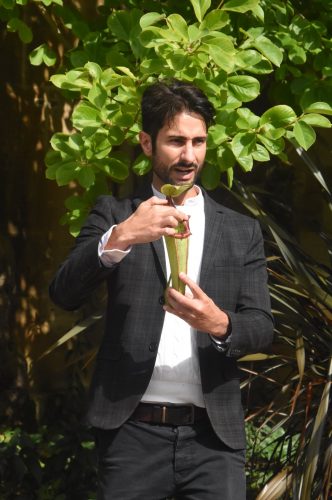
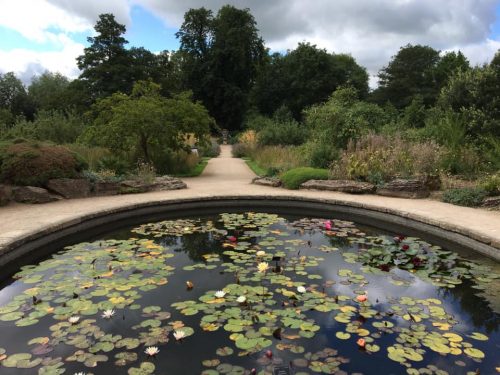
The Rock Garden has recently undergone significant redesign to create a geographical plant display that illustrates former Director John Sibthorp’s 18th century journeys in the eastern Mediterranean which gave rise to the Flora Graeca, a very significant botanical work associated with the Oxford Botanic Garden. The eastern side of the Rock Garden contains groupings of endemic plants from Greece, Turkey, Cyprus and Crete as well as from Israel. The western side of the Rock Garden is being developed to represent endemic flora from the western half of the Mediterranean including Sicily, Majorca and the Iberian peninsula.
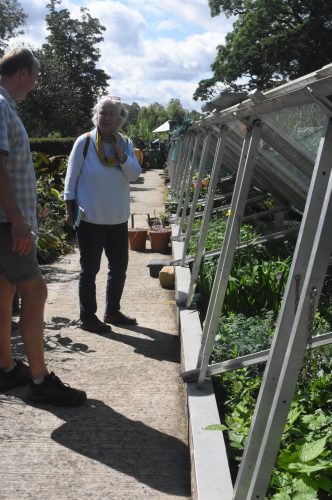
Russell Beeton, horticulturist and propagator gave us an introduction to the planting. His top tip for being successful with cuttings is ‘take a lot’, as we later saw in the cold frame!
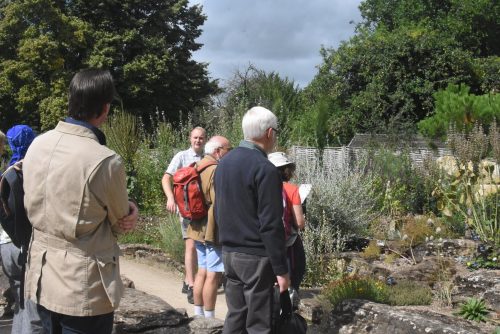
The last flower of Michauxia campanuloides, which had been grown from seed from the Jerusalem Botanic Garden, and whose ‘Catherine wheel’ flowers had been lighting up the Rock Garden through the summer.
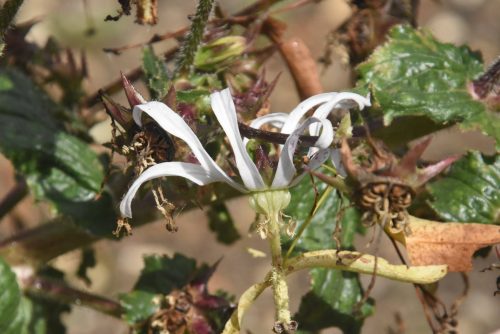
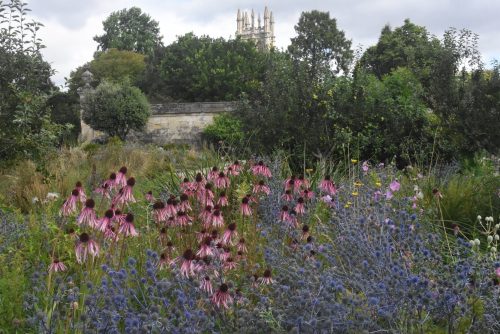
The garden’s Merton Borders are planted in an ecologically sustainable ‘prairie’ style, with 85 per cent of the plants established through the direct sowing of seed. The plant selection ensures a long succession of flowering through the season and features plants which able to withstand drought conditions.
The final stop in the tour was a small collection of Orobanche and Cistanche, parasitic plants and their hosts. Orobanche coerolescens is parasitic on species of Artemisia.
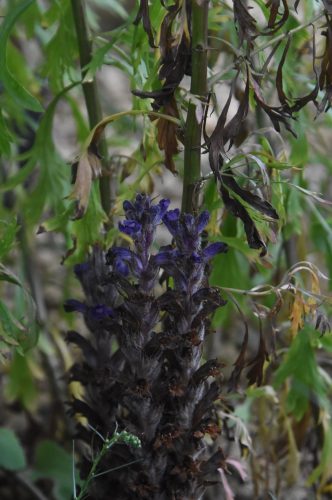
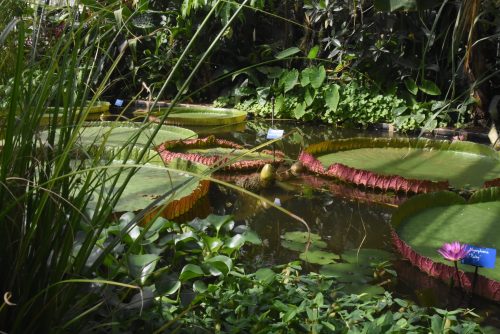
We were then free to explore other parts of the garden and enjoy visiting the glasshouses, rebuilt in the 1970s. Tall blue water lilies and giant lily pads in the tropical water lily pond.
The height of some of the plants in the spectacular herbaceous border had members speculating about whether the border was banked, but it was actually just a good selection of plants to ensure that the planting sloped in a traditional way from front to back. The exceptionally tall yellow-flowered Silphium was stunning. We then passed through a gate in the wall with a magnificent specimen of Itea ilicifolia on the other side.
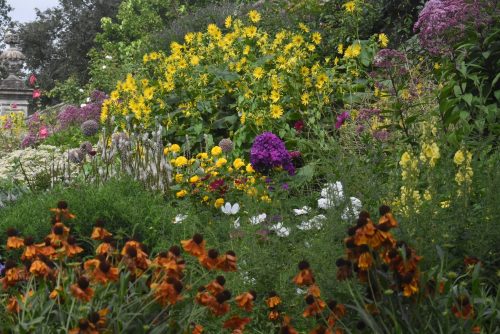
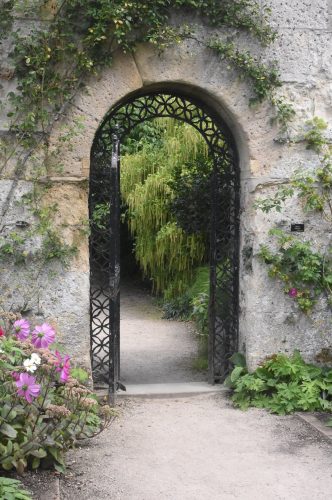
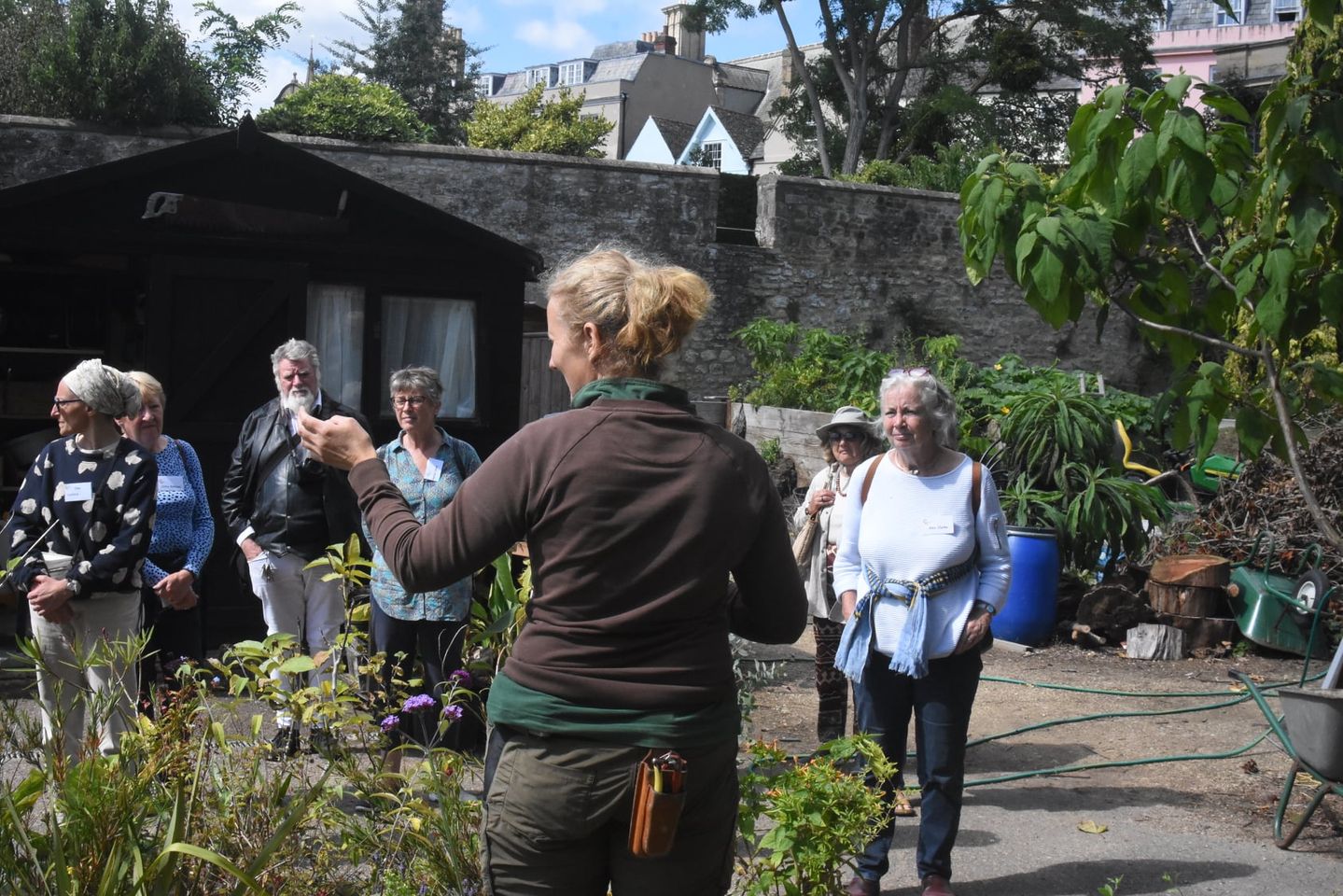
After a picnic lunch under the trees at Merton College, Lucille Savin, head gardener and MPG member, gave us an introduction to the gardens of Merton College, founded in 1264 and one of the three oldest Oxford Colleges. Lucille and her team of three gardeners manage very varied gardens from the large, lawned Fellows’ Garden with a large herbaceous border to a small courtyard.
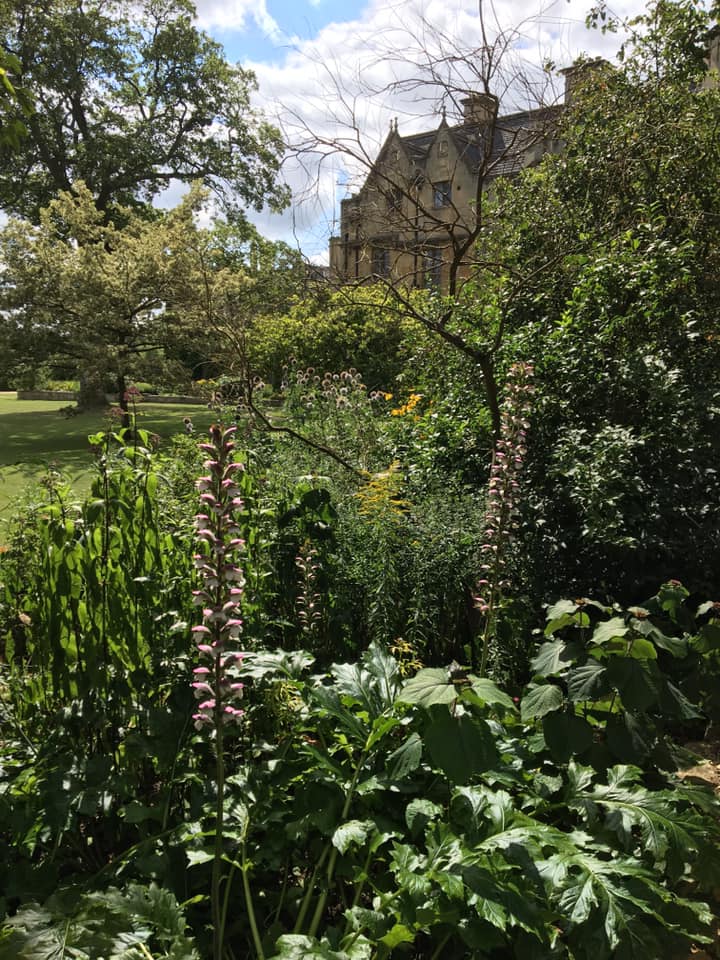
The planting and buildings around the Fellows’ Garden had something of the feel of a country rectory. The mulberry tree, Morus nigra, in the Fellows’ Garden was planted in the early 17th century.
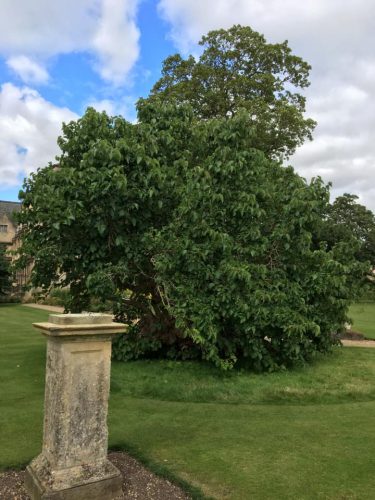
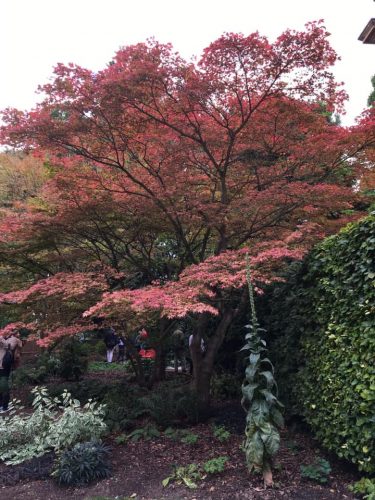
One of the Japanese maples in the shady area which is being developed as an oriental garden. With limited funding, the gardeners beg, borrow and propagate.
Across the other side of Merton Street is a small area, packed with exotic plants, including bananas, a monkey puzzle tree and Tetrapanax papyrifer ‘Rex‘, here demonstrating its tendency to produce new root suckers. This area’s microclimate gave it a very different feel from that of the gardens we had seen earlier.
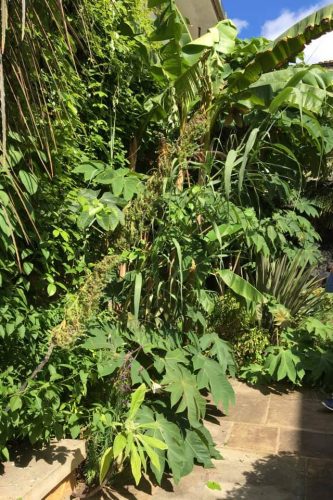
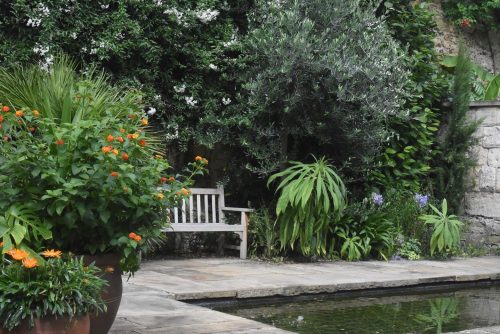
Out of the tropics and into a Mediterranean oasis with a small pond, although we shall have to go back again to see the waterlilies – they were diseased and had been removed.
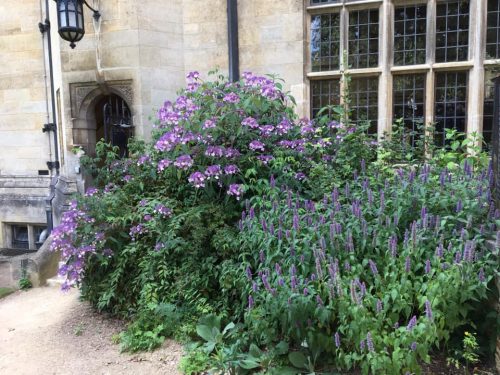
Throughout the gardens we were aware of the thought that had gone into different combinations and styles of planting to entice us through from one area to another. Compare the soft bluey-mauve planting of Hydrangea aspera and Agastache by this doorway, with the vibrant exotic colours of chard just round the corner.
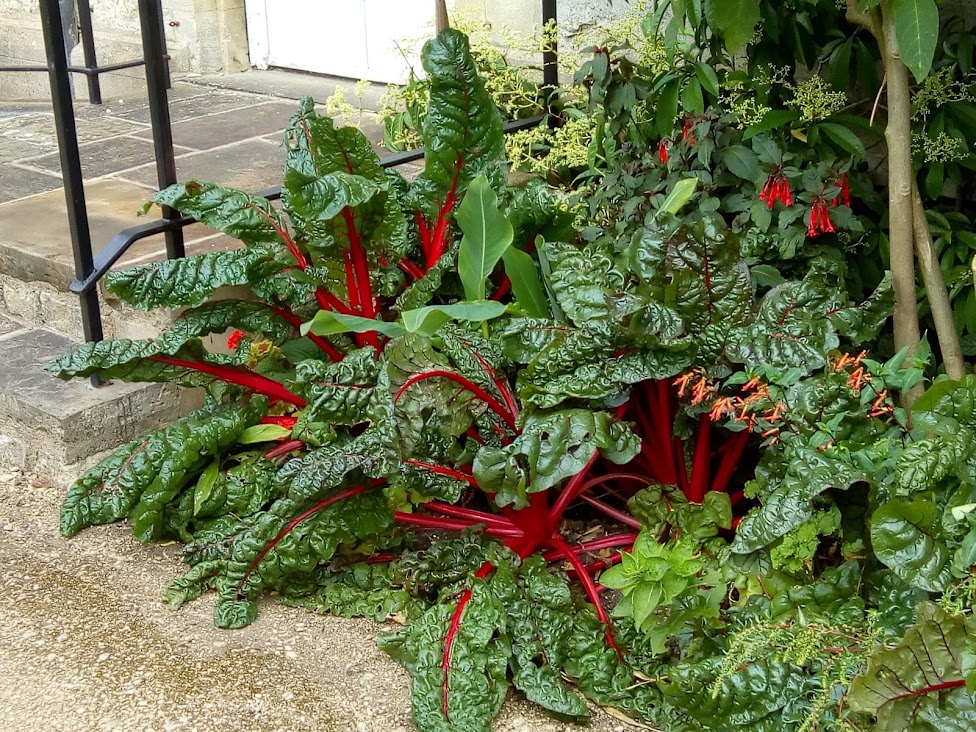
Intricate pebble work in the Front Quad, where we finished our tour.

This trip had been organised in 2019 to take place in summer 2020, but it had to be postponed due to Covid-19. Members appreciated the opportunity to get together and share the privilege of guided tours of these two very special gardens.
Photos courtesy of Lesley Jones, Roisheen Childs and Graham Rollinson.

